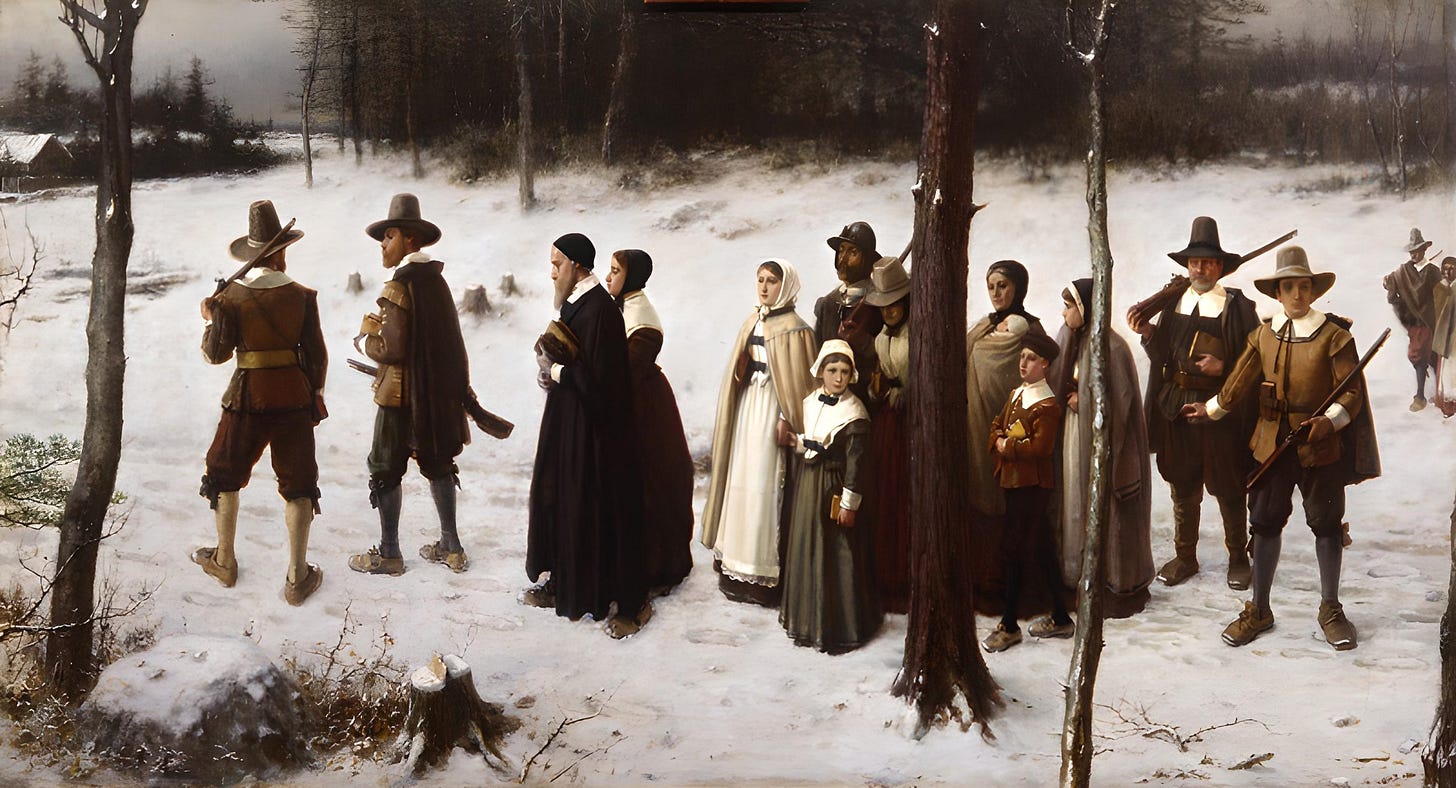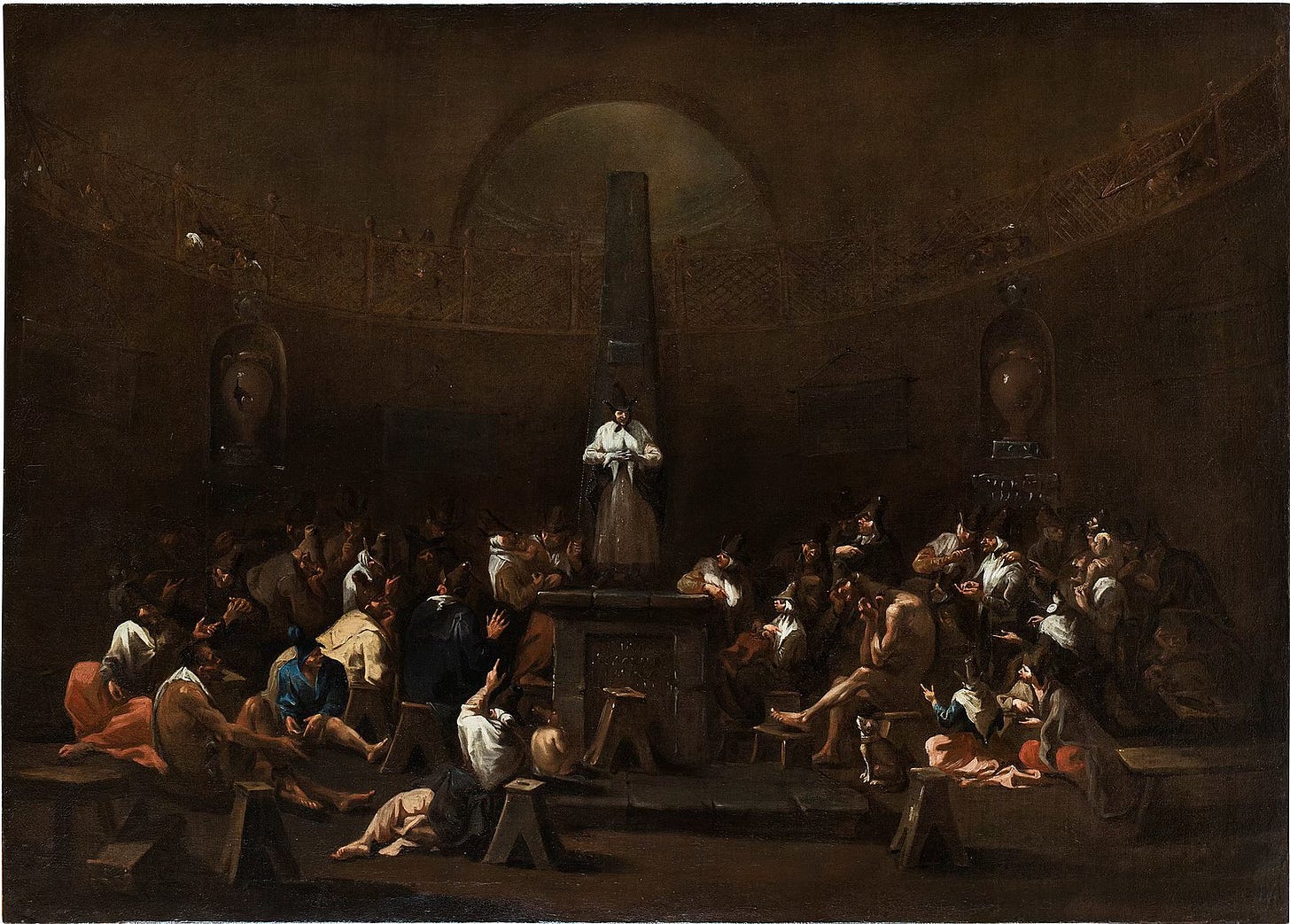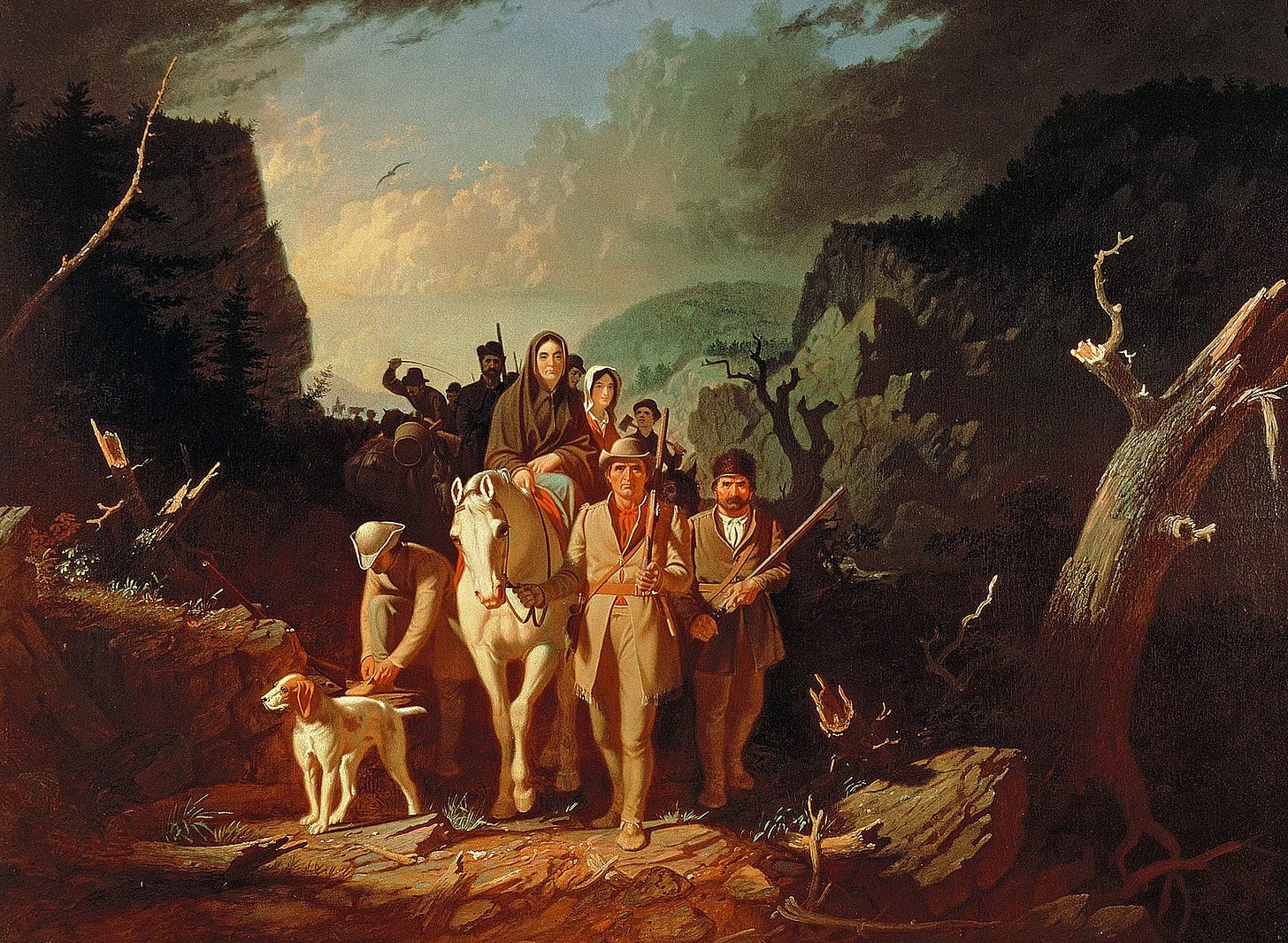There’s talk of revival in the air. Some of us have been predicting it for a while, but now there are little sparks of religious faith flaring up all over the cultural landscape: among the young men of Gen Z, for instance, and on some college campuses. At high-powered functions in Silicon Valley.
Church attendance generally continues to decline, but there are signs that the momentum may be shifting in key places. Bible sales in America ticked up by 22% last year, while the country was bracing for its most dramatic election in living memory. The guy who won, of course, sells a Bible of his own.
Global turmoil, a technological revolution, and rapid public mood swings...it’s just the sort of moment when you’d expect a people to lean for stability on its ancestral faith. Which raises the question: just what is America’s ancestral faith, exactly?
G.K. Chesterton had a much-quoted saying that America is “a nation with the soul of a church.” It might have been more accurate to call it a nation with the soul of four churches, or five, or ten. This is Christendom’s first great post-Reformation country, formed in the wake of Westphalia. Its settlers were among the first generations to come of age in a Europe whose official religious teachings and practices varied radically from country to country. Many of them traveled to the new world fleeing persecution for their heterodoxy, which they brought ashore with them.
And despite the wild transformations that have ensued, in its deepest impulses America remains what it has always been: a Christian nation with the soul of many churches.
Four Origin Points
In Albion’s Seed, a landmark study of the American colonies, the historian David Hackett Fischer identified four distinct British subcultures that occupied what would become the United States. Each one came with its own form of Protestantism.
There were the Puritans of Massachusetts and New England, rigorous Calvinist reformers who considered it their duty to correct the lapsed morals of the Church.
There was the Anglican gentry of Virginia and the South, devoted to the rites and rules of Mother England.
There were the daringly egalitarian Quaker Friends of Pennsylvania and the Delaware valley.
And there were the hardbitten warriors who tamed the backcountry, defiantly independent in their theology as they were in their rough ways of life.
Each of these four groups passed down its own Christian habits, sentiments, and convictions to the generations that followed.
Obviously, America is now a far more spiritually discombobulated and demographically splintered place than the pre-revolutionary colonies were. The revival taking shape now is hardly defined enough to fit neatly into established denominational categories.
Still, the Christian sentiment that’s stirring in the country comes in a few major strains, each one distinctly modern but also recognizably marked by some of America’s oldest national character traits.
The Evangelicals
First, for lack of a better term, there are the “evangelicals”—a word stretched almost beyond all meaning that nevertheless describes a real flavor of American worship. When the New York Times reported on the high proportion of religious men relative to women in Gen Z, it focused on the Texas Southern Baptists at Grace Church and its offshoot, Hope. When the small town of Asbury, Kentucky played host to an impromptu outpouring of worship at its local college chapel, the atmosphere was similar. Picture guitars, projectors, and altar calls.
The evangelicals have inherited a little of that Puritan spirit. They mean to defend rigorous morality against the decadence of mainstream culture. “It’s about denying yourself, and denying the lust of the flesh,” said Kitron Ferrier of Grace Church. There’s the old rigor of the reformers, the insistence on unvarnished truth stripped bare of inessential luxury. Despite the occasional smoke machine, evangelicals tend to define themselves in terms of plain buildings and clean living—sometimes, like the Puritans, in contrast to other Christians.
The Catholics
Chief among those other Christians are the Catholics. Seventeenth-century Americans tended to mislike Catholics, who represented the old world. In the current landscape, though, Catholics occupy a position closest to the one formerly occupied by the southern Anglicans—in a country that favors innovation and experimentation, they offer high liturgy and deep tradition.
To the surprise of tastemakers and sometimes even to the consternation of church leadership, it’s the order and tradition that have saved Catholicism from irrelevancy in America’s new era of belief. Vice President J.D. Vance is representative of the trend. One reason why he converted was because, dissatisfied with the formless Protestantism of his youth, he found Catholics “very intense about the moral rules they want their followers to follow.”
The Nearly-Nones
But then, near the other end of the spectrum between law and chaos, there are all those people who bought Bibles last year. Many of them would probably show up on a Pew survey as “nones,” lacking formal affiliation with any church. Yet wars and rumors of war have prompted them to lean on Christian scripture.
Cely Vasquez, formerly of Love Island USA, said she felt gripped by “a combination of where we are in the world, general anxiety, and the sense that meaning and comfort can be found in the Bible.” Maybe a reality starlet isn’t the most likely candidate for an immediate, full-blown conversion, but apparently she’s one of many who finds herself unexpectedly nudged in that direction when things start to get real.
This, too, is very American. It’s also very modern. If the nearly-nones have an analogue from the colonial era, it might be the Quakers, who resisted many of the faith’s formalities and reached for a more organically direct connection with God. But people like Vasquez are products of a far less robustly defined culture than the Quakers were. More than anything, they’re responding to Christianity’s ambient gravitational pull, which remains strong even in an apparently secular age.
“In Europe and North America,” wrote the historian Tom Holland in Dominion, a decisively Christian spirit still prevails “in the assumptions of many...millions who would never think to describe themselves as Christian.” Maybe more of them are starting to consider calling themselves that now.
The Frontiersmen
Certainly one group of people is growing more comfortable with the Christian label than anyone might have expected a decade ago. There’s an intellectual vanguard—philosophers, critics, artists, tech entrepreneurs—making the high-minded case for belief. The most recent was Larry Sanger, co-founder of Wikipedia, who can’t yet sign up for any particular denomination but who recently described at length his decision that “I should admit to myself that I now believe in God, and pray to God properly.” Before Sanger came Ayaan Hirsi Ali, Matthew Crawford, Peter Thiel. There are enough of them now to be called a movement.
These are surely our frontiersmen. Like the old frontiersmen, they favor adventurous and dramatic theology for their adventurous and dramatic circumstances. They are prone to grand theories about the end times and the clash of civilizations, all of which figures. Those in tech, especially, work at the edge of humanity’s limits in a perilous new age of exploration. They are among those pressing forward into outer space, into the workings of the body and brain, into machine capabilities. Out in that dark wilderness there are rival and even savage faiths, preached by babel-builders who want to kneel before AI superintelligence or hail a rising one-world government. It's dangerous to ride the high country without a map, and Christianity is a time-tested one, well-known for keeping its followers from dropping into snake pits.
Tag Yourself
This catalogue of revival is far from exhaustive, and its comparisons with the first Americans are far from exact. Nevertheless, it’s enough to show that what’s going on is a very real national movement despite being full of variety. The variety is part of the national character, which from the very beginning has featured an unlikely harmony of disparate, sometimes fractious elements.
The temptation is to resolve all this multiplicity into one tidy doctrine, and certainly there are some articles of faith—the triune God, the resurrection, the forgiveness of sins—without which Christianity is not Christian. But beyond those non-negotiables, mere American Christianity has always taken many forms in this big, unruly land.
“It is...like a hall out of which doors open into several rooms,” said C.S. Lewis of the original Mere Christianity. Any one believer must ultimately pick a door. But the building might need all the rooms—all the passion of the evangelicals, all the ancient solemnity of the Catholics, all the longing of the nearly-nones and wild-eyed mysticism of the pioneers—to stand. For “God has set the members, each one of them, in the body just as He pleased.” And shall the eye be plucked out, because it is not a hand?
Thanks for reading this month’s essay. There’ll be a livestream on for paid subscribers to go with it on Monday, February 24 at 6pm ET. Join us on Substack to discuss these themes, and please consider upgrading your subscription if you haven’t already.









This sums up a neat package, but of course sadly, it is far from neat. All of those "sects" also have taken political positions, and they will at times quarrel both within their own ranks, and with each other. Thus it has always been, you may day--and that's true. But one can hardly focus on the good of the church if it's busy arguing who should be president, and why this leader is evil--and that leader is good....
I don't actually see an issue with us all getting along if we cling to what unites us...particularly the 10 Commandments, even before Christ. Our squabbles tend to be on all the nuances, but fundamentally we have, or should have, the same foundation.